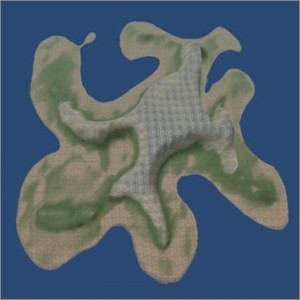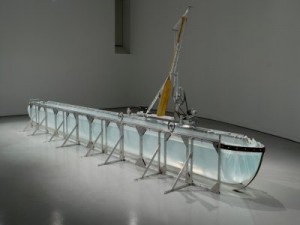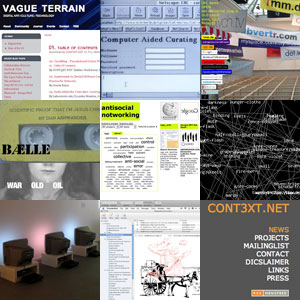
Once when I was about ten years old, I was poring over a brochure for travel to Greece that ended up in my family’s home. I was very interested in examining the details of each island advertised in the brochure, and the various reasons for going there. I remember being especially intrigued by one island (the name of which I forget) which had sounded distinctly industrial and un-touristy, but the indefatigable travel agents that had authored the brochure wrote that it could be of interest to “island buffs”. My ten year old brain marvelled at this: island buffs! I wanted to be an island buff and go to this mysterious island that had only one line of text devoted to it, where the other islands had whole paragraphs extolling the virtues of its beaches and resorts.
Having this “island buff” latent within me as a much older person, I read with some interest about the demise of an island in Second Life, the virtual community created by Linden Labs. I’ve long been a Second Life skeptic, unsure I’d become quite bored enough with First Life to bother with a Second. At the zenith of Second Life buzz, it seemed like everyone was crafting an avatar or buying an island (except me). After the hype, it’s interesting to see where things end up, and so I found this highly entertaining missive from Scott Shamp, Director of the New Media Institute at the University of Georgia, quite fascinating:
UGA purchased the NMI Island in 2007. We wanted to explore the potential of virtual worlds. Over a thousand avatars (virtual versions of people) representing students and people from all over the (real) world teleported in to visit. We hosted a virtual tailgate Fridays before gamedays where alum could meet students – the firework shows were spectacular. […] And I taught class on the island. In my 21+ years on the faculty, that had to be the weirdest teaching experience. Try focusing on your lecture when students spontaneously fly away. […]
But on Wednesday, 9/10, our experiment ends. You see LindenLabs, the company that runs SecondLife, is a for profit company. It costs $1700 a year for us to own our island – and that is with a 50% educational discount. Yes, I have one of the bravest deans ever. Dean Clark actually signed a purchase order for “One Island.” We discovered that you can sole source an island, but a continent will have to go out on bids.
Everybody is feeling the economic pinch these days and UGA is no different. With looming budget cuts threatening crucial services, an island is a luxury we just can’t afford. We didn’t renew so Linden Labs is pulling the plug on the NMI island.
And here is one of the most unfortunate aspects of virtual worlds. Unlike a web page that we can download and store on local hard drives, everything that we built only works in SecondLife. So we can’t save it. Frankly, that sucks. So everything from the 300 foot virtual Arch, to the flashing dance floor with a giant aquarium, to the incredibly realistic football field, to the beautifully executed virtual GA 400 will be erased.
Though Scott puts a brave face on it, this is actually quite sad. An institution of learning developed an online research project and because of some typical corporate short-sightedness on the part of Linden Labs, the University will walk away with nothing. No momentos, no souvenirs. No “I bought an island in Second Life and all I got was this lousy t-shirt” t-shirts. Professor Shamp and his students will have little other than a few screenshots to remember their Second Life experiment by, and this reminded me of another, richly-rendered island community that was envisioned not in Second Life, but on paper:
Urville, imagined as an island metropolis for 12 million inhabitants, begun when Tréhin was only five years old, is a triumphant example of a city made up almost from nothing. Tréhin’s own guidebook to the city includes hundreds of perspectival pencil drawings; these depict, in often astonishing detail, recognizable buildings and building types that have been combined to form a cityscape that itself exceeds recognition.
With imaginary spaces like the Square des Mille Astres, the Gare d’Italie, and the Place des Tégartines, Urville’s visual appearance could perhaps be described as a kind of Belgian Venice, crossbred with Chicago, as master-planned by Baron Hausmann for an upstart hotelier in Las Vegas. In other words, the city is derivative; it is a collection of landmarks. One can make out the Sears Tower, the Rialto Bridge, the Grande Arche de La Défense, and what could easily pass for New York’s World Trade Center towers—among many other sites on the global tourist circuit—but what Urville lacks is a human face.
The problem of a “human face”, both offline and online, remains the most difficult to solve. With a click of a mouse, the hard work of many students is erased from Second Life, leaving only the American Apparel outlet and whoever else is rich enough to maintain a virtual presence in the proprietary world of Second Life. Despite dozens of sketches, the author of an imaginary island community quotes the greats and yet cannot capture what makes urban living great. The island buff in me, meanwhile, remains more inspired by real micro-nations and micro-states, and a long-lost Greek island from a tourist catalogue. (Image: A typical Second Life island.)


